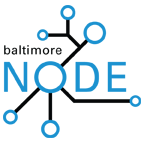Structure and organization
Formalizing our structure
It seems that if we are going to accept money and rent property we are going to have to formalize our structure somehow. Maybe we should look at the pros and cons of some of these options. Also by incorporating in some fashion we reduce the liability each of us faces for being associated with the group.
503(c)
A 503(c) is a non-profit organizations exempt from some federal income taxes.
Steps via Mike S.
- Decide who the board of directors is (these are the people who have responsibility for fiscal oversight of the corporation)
- Come up with an appropriate mission statement (you need this for the paperwork to come, plus it's obviously a good idea to get everyone on the same page about what you're trying to do)
- Decide who the officers are (President, VP, Treasurer, Secretary) -- make sure the Treasurer is someone who is good at bookkeeping, can run Quickbooks or the like without screwing things up
- File incorporation papers with the state of Maryland
- File 501(c)3 application with the IRS (pretty time consuming but worth it)
- In a few months you'll get a letter back from the IRS authorizing you to be a nonprofit for five years
- At the end of five years you have to prove that you are really a charitable organization (they have a few tests they apply to your financial records)
Pros
- Donations can be deducted from taxes.
- Don't have to pay federal taxes.
Cons
- Process takes awhile (IANAL, but I understand you need to be operating for a year before you can apply)
LLC
Pros
- Fast
Cons
- No tax benefits.
Fiscal Sponsorship from Fusion Group
The Fusion Group is a 501(3)(c) that acts as a fiscal sponsor. From their website, "Fiscal sponsorship offers a great advantage for those who are launching new endeavors, where the long-term viability of the project is yet to be determined. Operating under a fiscal sponsor allows community leaders to begin programs and services for a trial or incubation period prior to deciding to file for independent incorporation." The application process looks pretty straight forward and there are lots of other Baltimore-based groups using their services, including the 2640 project.
Pros
- Easy application
- We can take tax exempt contributions, apply for certain grants
- We'd probably get some financial guidance and other resources from the Fusion Group
Cons
- We'll need to be accepted into their program, which is not guaranteed
- 5%-10% of grants and donations are paid to Fusion to cover their administrative costs
- Requires initial fee of $250 for five hours of Fusion consultation if application is approved
Services for accepting Money
Member can conveniently go into credit card debt paying their dues thanks to these online services. All of these allow recurring billing, handle invoicing, etc. If we end up working with the Fusion Group, they might have their own methods for collecting money.
- Amazon Simple Pay Subscriptions is free through Sept. 2009, then costs 2.9% + $0.30 per transaction
- Paypal costs 2.9% + $0.30 per transaction.
- Google Checkout costs 2.9% + $0.30 per transaction.
Notes from Design Pattern on organization
Here is a translation of the orginazational section of the hackerspace design pattern, posted here so that we can edit/comment on them for our space. hackerspaces.org has a number of good resources to look over, including bylaws and regulations of other hacker spaces around the country.
The Plenum Pattern
Problem
You want to resolve internal conflicts, exercise democratic decision making, and discuss recent issues and future plans.
Implementation
Have a regular meeting with all members, if possible. Have an agenda and set goals. Make people commit themselves to tasks. Write down minutes of the meeting and post them on a mailing list and/or Wiki. Go for the only date that works: once a week. Weird dates like “first full-moon after the third Friday” will never work. Likewise, every other week or anything similar won’t work either.
The Tuesday Pattern
Problem
Every weekday sucks. You will not find any day when every hacker can attend a meeting. Someone always has an appointment.
Implementation
Meet on Tuesday. Since all days are equally bad, just pick Tuesday. End of discussion.
The OpenChaos Pattern
Problem
You want to draw in new people and provide an interface to the outside world.
Implementation
Have a monthly, public, and open lecture, talk or workshop. Announce it at your local time (no UTC, CEST, EST or something else). Invite interesting visitors to your regular meetings and don’t tell the weirdos.
The U23 Pattern
Problem
Your older members graduate from college or get married. Your space needs fresh blood.
Implementation
Recruit young people through a challenge you set up for them, in the form of a course that spans several weeks. Overwhelm them with problems from hardware and software hacking and let them solve them in teams. Prepare for the challenge and tutor them, but give them room to experiment. Retire after the team building and let the smartest of the young ones run the space.
The Sine Curve Pattern
Problem
You did everything right. You had some big events and a nice time in your shiny hacker space. But after some time the enthusiasm goes away and your projects are stagnating.
Implementation
Peak enthusiasm at a hacker space has the form of a sine curve with a cycle duration of four years. Keep the hacker space running, even if the feel-good factor is temporarily on holiday. Chances are good that your space will be awesome again in two years. Don’t give up! Maybe an exciting new member will knock on your door tomorrow.
